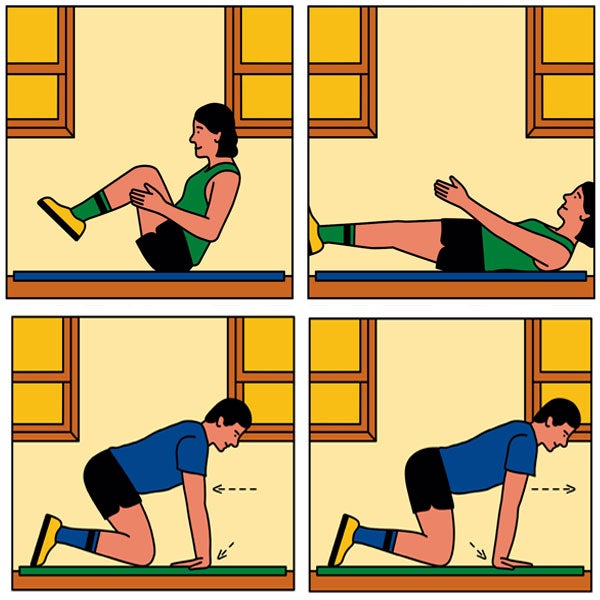Gymnasts have a coveted combination of strength and flexibility. And thanks to a wave of top coaches who have developed accessible gymnastics-inspired routines, athletes of all kinds can benefit from their training methods. These programs are designed to increase mobility, build resilience, and help you avoid chronic injury. , co-owner of Awaken Gym, a gymnastics-focused training center in Denver, teaches exercises like these in all her classes. Here she shares her top five moves.
Banded Shoulder Dislocates
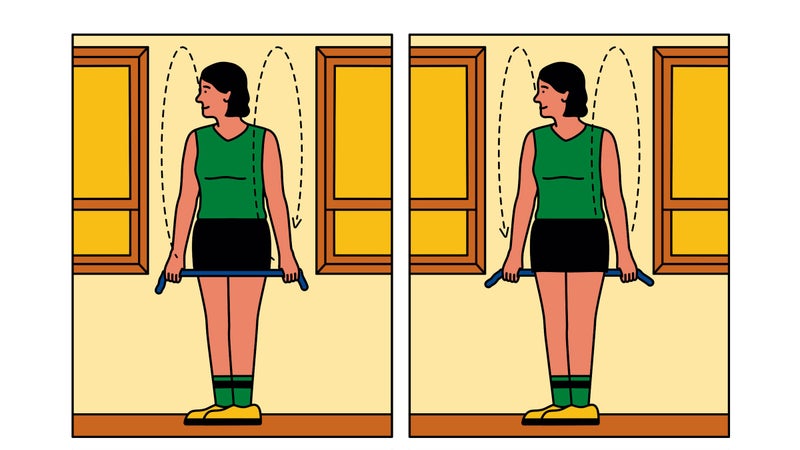
Why: To improve overhead agility and shoulder strength—especially crucial for climbers and yogis—and promote better posture.
How: Start by gripping a resistance band or towel with your palms facing your body. Slowly bring your arms up with straight elbows. When the band is overhead, shrug your shoulders to lower your arms behind you and finish the movement by bringing your hands past the back of your legs while still gripping the band. Bring your arms back up and over your head to complete the repetition. Do two sets of 15. To make the move more challenging, bring your hands closer together.
Straddle Overhead Side-to-Side
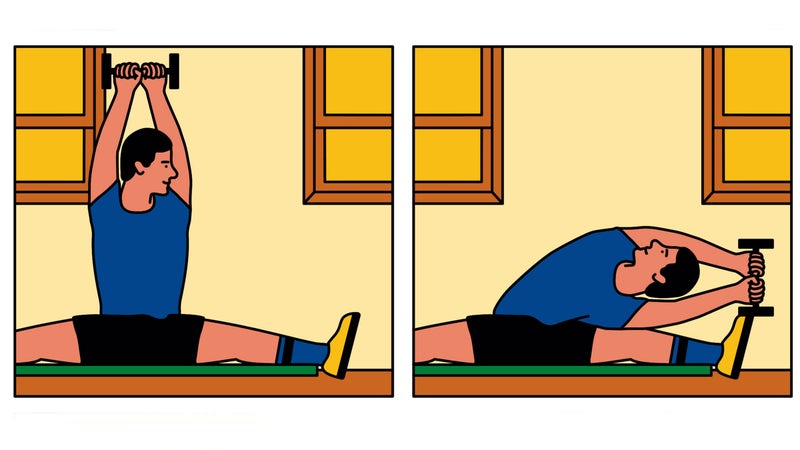
Why: To build strong obliques—especially important for runners, bikers, and climbers.
How: Start in a seated straddle. Holding a small weight with both hands, lift your arms overhead. Keeping your chest facing front, lengthen your right side, bringing your arms to the inside of your left leg or ankle. Use the strength of your obliques to lift your torso back up to center, and repeat on the other side. Continue for two sets of 15. For a greater challenge, add weight and twist your body as you bring your armpit all the way down to the inside of your thigh. To make it easier, use no weight and bend the opposite leg, sitting in a half straddle.
Dumbbell Bench Squats
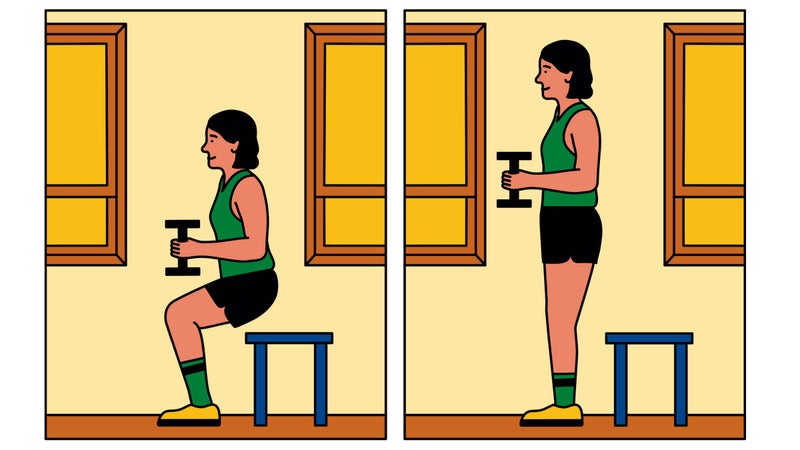
Why: “These squats build glute strength while helping to mobilize tight Achilles from running and biking,” Hatch says.
How: Place a bench or chair about a foot behind you. With your feet parallel and hip-width apart, bring two five-to-ten-pound dumbbells near your chest and squat back, tapping the bench or chair with your rear end as lightly as you can. Keep your chest up and your core tight during the entire movement. Do 10 to 15 reps.
Kneeling Wrist Stretch
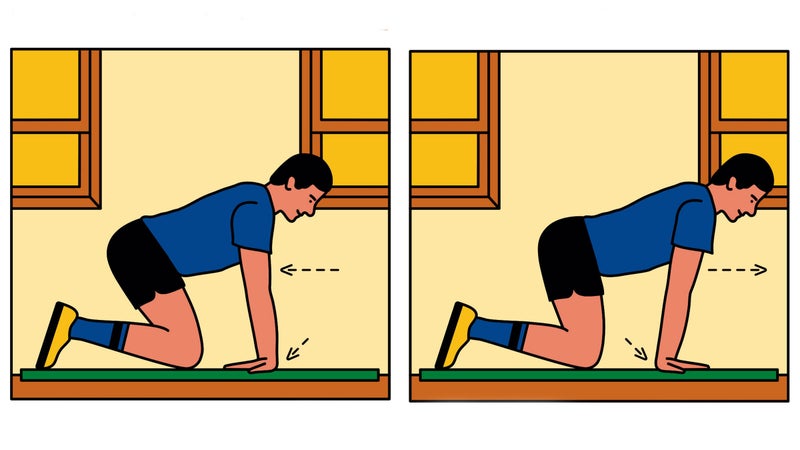
Why: To combat the negative effects on wrists from typing, texting, and driving. Wrist stretches help prepare athletes for intensive upper-body exercise that involves the hands (like climbing) and help restore motion and mobility in the joints.
How: Start on your knees with your hands under the shoulders. Lean forward while keeping your elbows straight and stretch your wrists. Rotate your hands to 90 degrees and then 180 degrees, so your fingers are pointing toward you. Hold each position for at least 30 seconds. To intensify the stretch, move your knees farther away from your hands.
Tuck-Ups
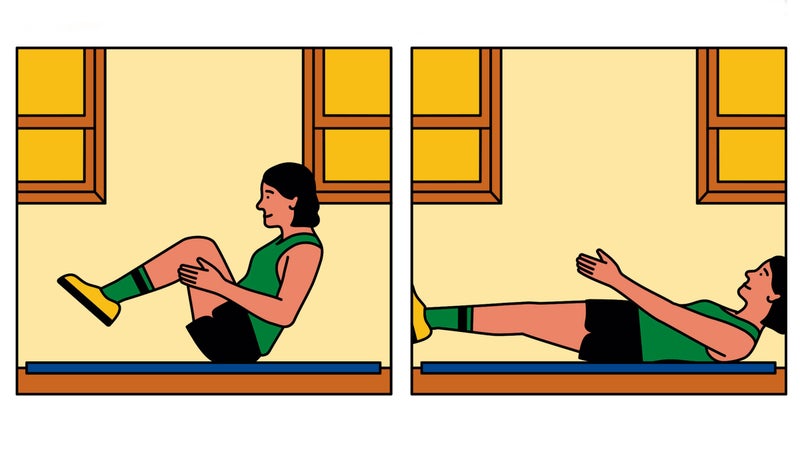
Why: Core strength is vital for most outdoor activities. Tuck-ups help strengthen torso muscles that attach the spine to the pelvis. “By building a solid core,” Hatch says, “you’ll also alleviate back pain.”
How: Lie on the ground with your arms by your ears and your legs straight. Raise your back from the ground and bring your arms down to your sides while tucking your knees to your chest so that you’re balancing on your tailbone. Release back to a hollow body position with just your lower back touching the floor. Aim for two sets of 15.


